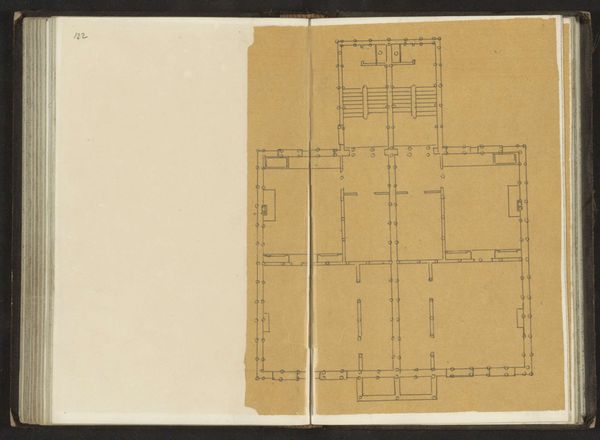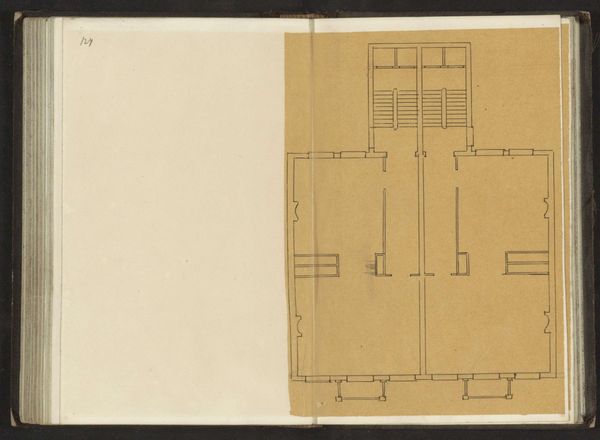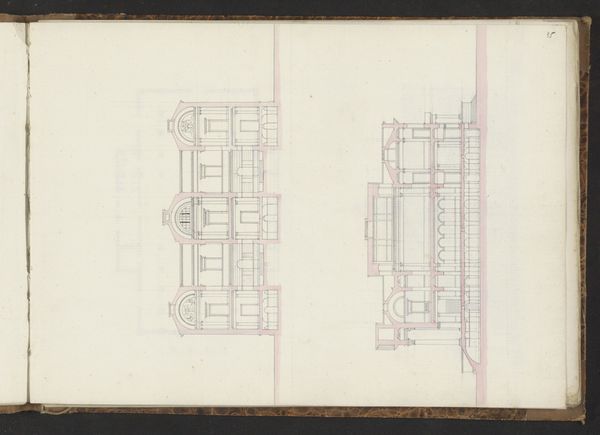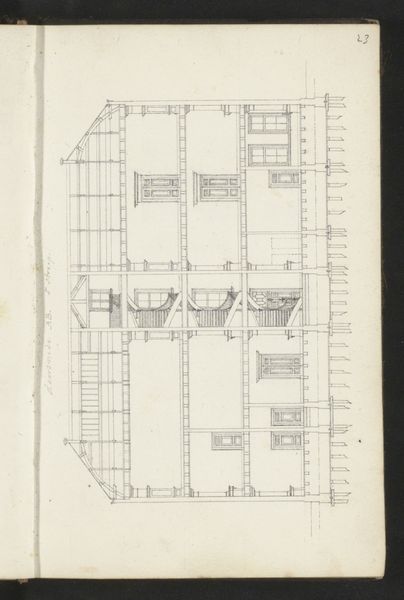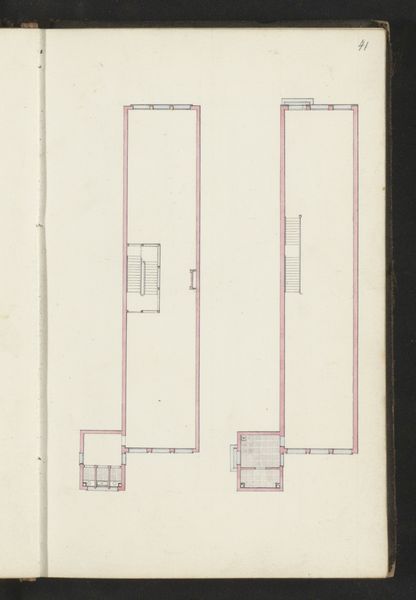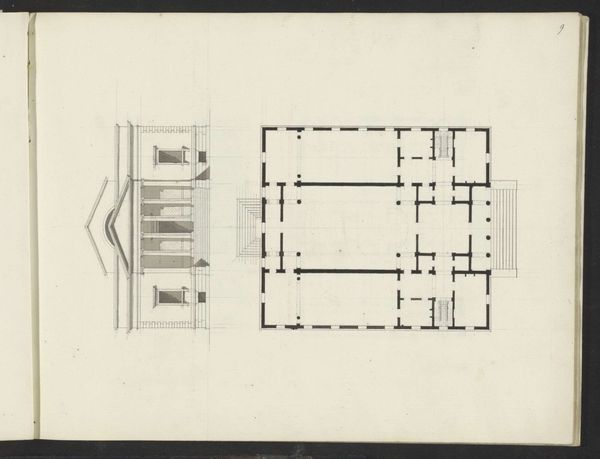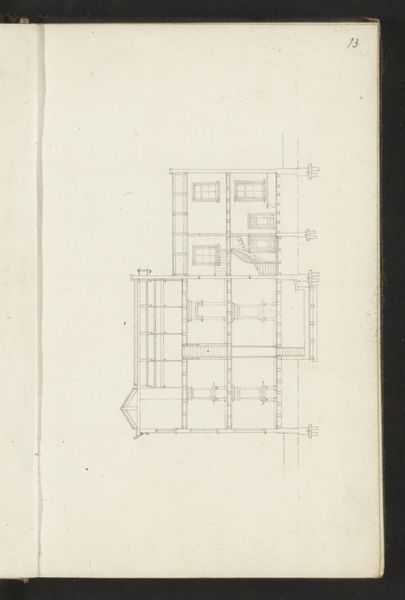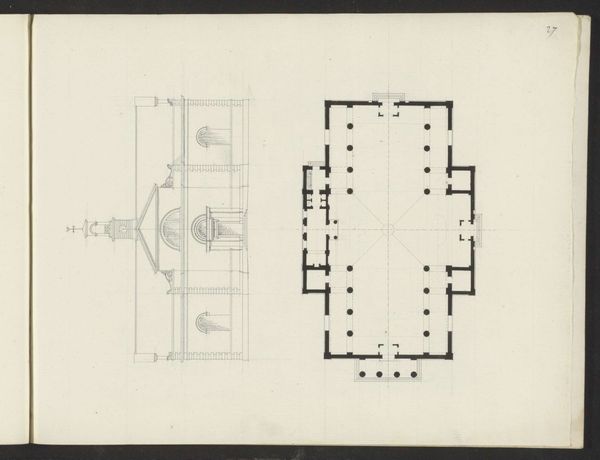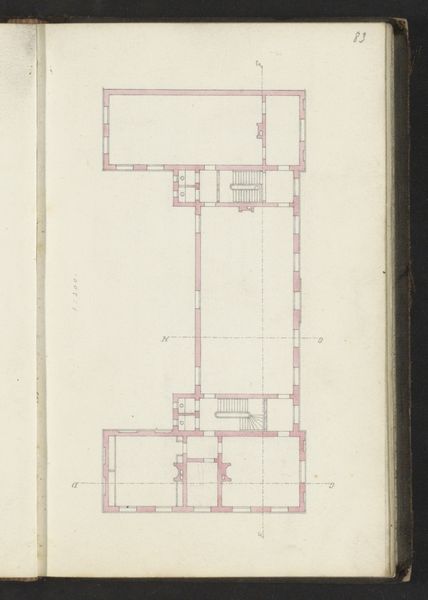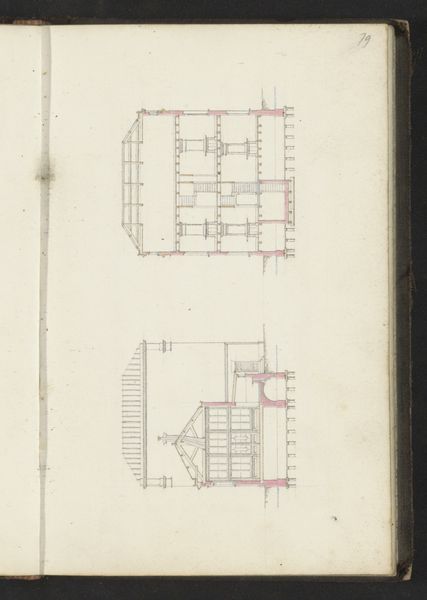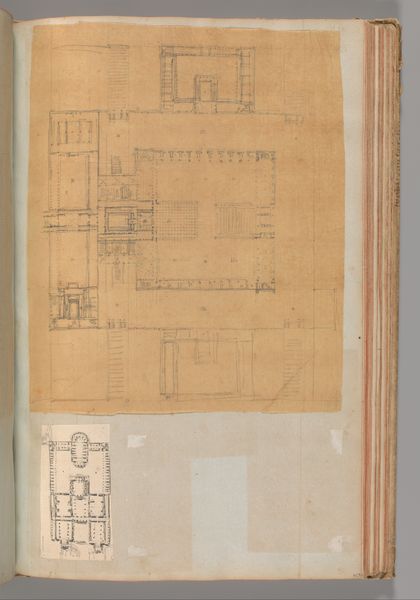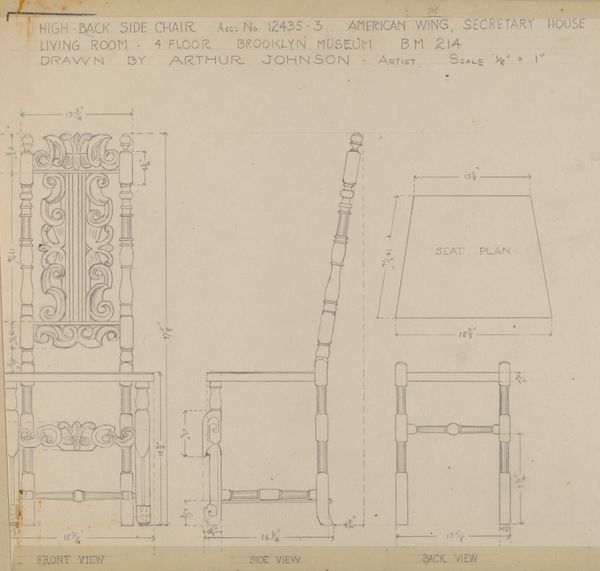
drawing, paper, pen
#
drawing
#
aged paper
#
toned paper
#
homemade paper
#
ink paper printed
#
sketch book
#
hand drawn type
#
paper
#
form
#
personal sketchbook
#
hand-drawn typeface
#
geometric
#
line
#
sketchbook drawing
#
pen
#
cityscape
#
academic-art
#
sketchbook art
#
realism
Copyright: Rijks Museum: Open Domain
Editor: So, this is "Doorsnede van een gebouw" by Willem Springer Jr., dating back to about 1864. It’s a drawing in pen on paper. I find it fascinating; it’s almost like looking into a dollhouse, stripped bare. How would you interpret this work? Curator: Immediately, one is struck by the stark linearity. Springer's dedication to delineating each structural element with unwavering precision serves a clear formal purpose. Observe how the rhythmic repetition of horizontal beams is counterpointed by the vertical thrust of supporting pillars. How do you think this repetition influences our perception? Editor: It gives it a very ordered, almost mathematical feel. The staircase creates this great zigzagging pattern against the rigid lines everywhere else, but even those zigzags are completely regimented and repetitive. It all feels meticulously planned. Curator: Precisely. Furthermore, the restricted tonal range – the subtle gradations within the brown paper against the black ink – underscore the emphasis on form. Do you see how the emptiness within the defined spaces, the absence of occupants or furnishings, directs our focus to the inherent architecture of the space? Editor: Definitely. The emptiness allows one to examine the space like a collection of forms: rectangles, squares and the interesting geometric angles of the staircase. Curator: In essence, Springer reduces the building to its bare essence, allowing us to contemplate architecture as pure structure. It encourages contemplation on the fundamental language of form and spatial relationships. Editor: I had never thought of an architectural drawing this way, as an essay on pure form. Now I notice the subtle beauty and balance, it’s about the relationship between shapes more than it's about the architecture itself. Curator: Indeed, art reveals itself through structure and meticulous details, reshaping our appreciation.
Comments
No comments
Be the first to comment and join the conversation on the ultimate creative platform.
